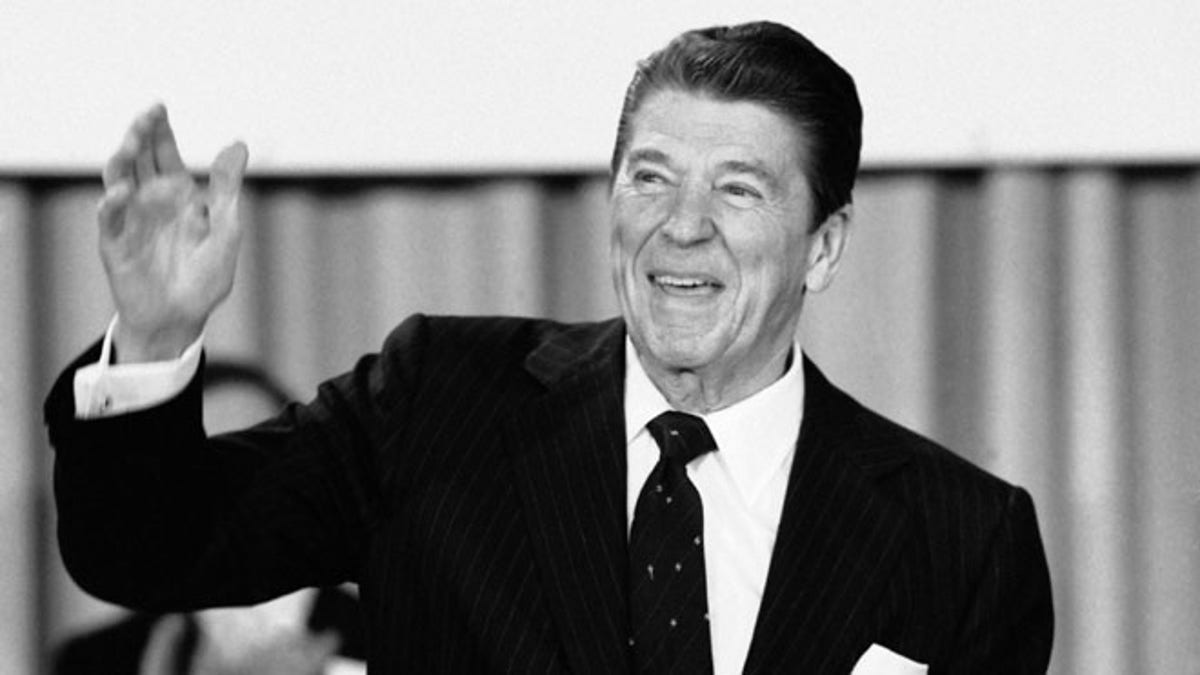
March 30, 1981 file photo of President Ronald Reagan speaking to the Building and Construction Trades Department of the AFL-CIO at a Washington hotel. ((AP))
On March 30, 1981, 25-year-old John Hinckley Jr. opened fire outside the Hilton Hotel in Washington D.C., shooting then-President Ronald Reagan in the chest, while also gravely wounding Press Secretary James Brady in the head and striking a police officer and Secret Service agent. Today, 35 years after the attempted assassination of our 40th president, a federal judge has ruled that Hinckley, now 61, will be freed from a mental institution to live full-time with his mother.
Astonishingly, when the news broke, I heard many young people ask who John Hinckley Jr. was. Because of this, I feel it is necessary to remind my readers of just how close our beloved 40th president was to dying at the hands of a mentally unstable person who said he plotted the attack to impress actress Jodie Foster.
Hinckley chose a .22 revolver for his attempted assassination and was just 10 feet away from Reagan when he began shooting. The final shot fired reportedly hit Reagan’s limousine before ricocheting into the left side of his chest, hitting his seventh rib and coming to rest in his lung. He was rushed to George Washington University Medical Center where the severely wounded president insisted on walking through the doors of the emergency room before collapsing and complaining of chest pain and shortness of breath. Intravenous lines were inserted into his veins and surgeons under the direction of Dr. Joseph Giordano inserted a chest tube and noticed his lung had collapsed.
From the time Reagan was struck by the bullet until surgeons were able to remove it, he lost 3.7 quarts of blood, or more than half of the amount humans have in their bodies. Doctors transfused eight units of blood to the 70-year-old president throughout the course of surgery which lasted nearly three hours. The FBI would soon come to learn that the bullets used by Hinckley were “Devastators,” customized .22-caliber cartridges designed to explode upon impact. It was reported at the time that doctors removing the bullet from the president’s body did not know that it could explode at any moment.
While it was known that the exploding bullet came to rest in Reagan’s lung, not many realize that it was lodged within an inch of his heart.
Just 70 days into a presidency that has become one of the most iconic legacies in our country’s history, an explosive bullet lay inches from our fierce leader’s heart. If you think medicine alone saved Reagan, you better think again.
I am a man of medicine, but I am also a man of great faith. I pray for protection, I pray for our nation and I believe in the power of a higher being. Regardless of your faith or religion, it’s hard to explain away how Reagan was 10 feet away from a would-be assassin armed with explosive bullets and lived to tell doctors that he’d “rather be in Philadelphia,” further going on to become one of the country’s most beloved political figures.
I think that, among young people in particular today, we are missing a fundamental faith. Something to believe in, something to guide us to a path of enlightenment. While we have no trouble borrowing the political philosophies of Reagan, I think we should look to borrow something else. Reagan was a man of great faith and forgiveness. He forgave Hinckley, and in 1983, asked if he could meet him to offer his forgiveness in person. The meeting never occurred, but it speaks great volumes about what faith can do for a person. With the violence of today’s culture, and the misdirection among our youth, let us look back to Reagan to help propel us into a better future.
